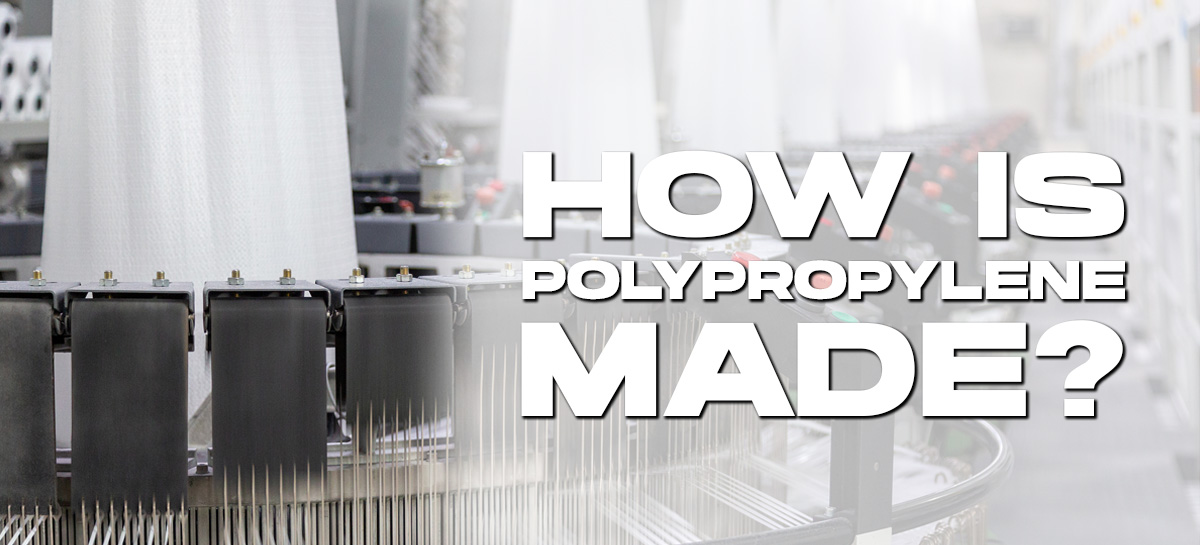How Is Polypropylene Made? Polypropylene Manufacturing Process Explained

How is polypropylene made, and why is it one of the most widely used plastics today? To understand this, it helps to first look at what makes polypropylene so valuable. Its lightweight strength, chemical resistance, and flexibility make it essential for industries like packaging, automotive, textiles, and construction.
Here, we explore the polypropylene manufacturing process, explaining how raw materials are transformed through polymerization and shaping techniques to create the plastic’s final form.
Have questions about polypropylene grades or sourcing options? Contact us today to speak with our knowledgeable team members.
How is polypropylene made?
The polypropylene manufacturing process: A deeper look
To understand how polypropylene is made, we follow its journey from raw materials to final pellet form. This process involves several precise steps, each critical for ensuring the right properties, such as heat resistance, mechanical strength, and versatility.
Below, we break down each stage used in a typical polypropylene to create the final :
| Step | What Happens |
|---|---|
| Raw material sourcing | Propylene monomer is sourced from petroleum or natural gas, providing the base hydrocarbon for polypropylene production. |
| Propylene purification | Raw propylene is purified to remove impurities like water, oxygen, or sulfur that could disrupt polymerization. |
| Polypropylene polymerization | Using Ziegler-Natta or metallocene catalysts, propylene gas is polymerized into long-chain polypropylene molecules in loop or gas-phase reactors. |
| Reactor discharge & quenching | The polymerized material is discharged and quickly cooled (quenched) to halt polymer growth at the desired molecular weight, controlling final product traits. |
| Separation & recycling | Unreacted propylene, catalyst residues, and by-products are separated, cleaned, and often recycled back into the system to improve process efficiency. |
| Pelletizing | The polymer mass is extruded, cooled, and chopped into uniform pellets, ready for transportation and use in further manufacturing processes. |
| Additive blending & coloring | Optional stabilizers, color pigments, or performance-enhancing additives are blended into the pellets, tailoring them for specific applications. |
| Bio-based integration | Some polypropylene plants now integrate bio-based or renewable feedstocks to reduce their carbon footprint and support sustainable production goals. |
1. Raw material sourcing
Polypropylene is made by sourcing propylene monomer, typically extracted from petroleum or natural gas. This essential petrochemical feedstock provides the hydrocarbon backbone for polypropylene material, serving as the base for the polymerization reaction that ultimately delivers versatile products like polypropylene sheets and containers.
2. Propylene purification
Before polymerization, the propylene is purified to remove unwanted impurities such as sulfur, oxygen, and moisture. This step is critical to ensure efficient catalyst performance and consistent polypropylene properties, allowing manufacturers to maintain the quality and reliability expected by industries relying on suppliers.
3. Polypropylene polymerization
In the polymerization phase, propylene gas undergoes a chemical transformation. Catalysts such as Ziegler-Natta (ideal for standard applications) or metallocene (which offers precise control over molecular structure) guide the polymerization of propylene into long-chain polymers. This choice directly influences the polypropylene melting point, flexibility, and mechanical strength.
4. Reactor discharge and quenching
The reaction takes place in industrial loop or gas-phase reactors. Once the desired polymer grade and molecular weight are reached, the material is discharged and rapidly quenched to halt polymer growth. This controlled cooling step locks in the polypropylene’s heat resistance and mechanical attributes, preparing it for the next stage.
5. Separation and recycling
Following quenching, unreacted propylene, catalyst particles, and by-products are separated from the polymerized material. These elements are often recycled back into the system within the polypropylene plant, maximizing resource efficiency and supporting sustainable production practices sought by a forward-thinking polypropylene supplier.
6. Pelletizing
The cooled polypropylene is then extruded and pelletized into uniform shapes. These pellets are a standard input for numerous applications, from polypropylene sheet uses in packaging to molded parts in automotive or industrial equipment. Their consistency and quality are essential for smooth downstream processing.
7. Additive blending and coloring
At this stage, optional additives like stabilizers (for enhanced polypropylene heat resistance), UV inhibitors, pigments, or other modifiers may be blended in. These additions customize the final product’s performance, making sure it meets the specific demands of what polypropylene is used for across different industries.
8. Bio-based integration
An emerging trend in how polypropylene is made involves integrating bio-based or renewable feedstocks alongside traditional petrochemical sources. This innovation helps reduce the environmental footprint of polypropylene production and appeals to markets focused on sustainability without compromising material quality or performance.
So, once this substance is made, what is polypropylene used for? Polypropylene is widely used across industries for its durability, chemical resistance, and versatility. Common applications include:
- Packaging films
- Automotive components
- Medical devices
- Textiles
- Ropes
- Industrial bulk bags
- General consumer products
Thanks to its heat resistance and material strength, it also serves in high-temperature or mechanically demanding environments.





